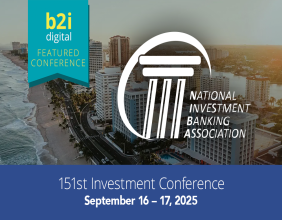European and London markets showed a mixed response at the opening bell on Tuesday (28th April 2020), while stocks surged across the globe on Monday as investors cheered over hopes of lockdown easing. However, the dramatic drop in oil prices amid the nosedived demand and lack of storage capacity to manage oversupply situation continues to hammer the profitability of oil producers. In such unprecedented market conditions, Companies are reinforcing their liquidity, slashing cost and planned spending to weather the uncertain period caused by Coronavirus outbreak. Adjacently, intensified market volatility and discounted prices are significantly increasing the trading activity and attracting new investors into the market. Hence, it would be interesting to throw light over two varied stocks amid the economic disruption to understand how they are sailing through the undetermined tides.
Today, we will discuss a blue-chip oil & gas producer BP PLC (BP) and a mid-cap financial services firm Plus500 Limited (PLUS). Both companies have released their trading updates today (28th April 2020). Subsequently, the price of BP expanded by around 1.20 per cent, while PLUS accelerated by over 4.5 per cent (at the time of writing, GMT 9:55 AM). Let’s get a glimpse over their respective business model, financial position, and outlook to understand the magnitude of their latest trading updates.
BP PLC (LON:BP)
BP PLC is a FTSE 100 listed company, which operates an integrated energy business. The group has operations in 79 countries, with approximately 18,900 retail sites and having a workforce of around 70,100 people globally. It has operations in Africa, Asia, Australasia, North & South America and Europe.

(Source: Company Website)
Business Segments at a Glance (Financials in USD Billion)
The operations of the BP PLC are differentiated into the following four operating segments:
-
Upstream:
- The Upstream segment consists of ?eld development and production activities, oil and natural gas exploration, which help in renewing the resource base of the group. It also includes the marketing and trading, storage and processing, and midstream transportation of natural gas.
- Replacement cost (RC) profit before interest and tax stood at $4.9bn in FY2019 (FY2018: $14.3bn).
- Underlying RC profit before interest and tax for FY 2019 was $11.2bn (FY2018: $14.6bn)
-
Downstream:
- It comprises marketing and manufacturing of fuels, petrochemicals and fuels along with integrated oil supply and trading function.
- Replacement cost profit before interest and tax stood at $6.5bn in FY2019 (FY2018: $6.9bn)
- Underlying RC profit before interest and tax for FY 2019 was $6.4bn (FY2018: $7.6bn)
-
Rosneft:
- BP PLC holds 19.75 per cent stake in Rosneft (which has both downstream and upstream operations).
- Replacement cost profit before interest and tax stood at $2.3bn in FY2019 (FY2018: $2.2bn).
- Underlying RC profit before interest and tax for FY 2019 was $2.4bn (FY2018: $2.3bn).
- Other businesses and corporate: Other businesses and corporate comprise corporate activities worldwide, the biofuels, wind businesses, treasury and shipping functions of the group.
Vital Developments of 2020
- 27th April 2020: BP announced the disposal of its Alaska business to Hilcorp for a consideration of USD 5.6 billion. The transaction is subject to regulatory approval and expected to complete in June 2020.
- 1st April 2020: In order to preserve liquidity to battle market volatility, the group announced cost savings of USD 2.5 billion and capital expenditure to be cut by 25% in FY2020.
- 20th March 2020: The company announced that it had appointed Paula Reynolds as the senior independent director in place of Sir Ian Davis with effect from the conclusion of the Annual General Meeting (AGM) to be held on 27 May 2020.
First Quarter 2020 (as on 28th April 2020) - Exceptionally Challenging Environment, Unprecedented Effects of Demand Destruction, and Results Impacted by Forex as well as Price Effects in March 2020
- Led by lower prices, a lower estimated result from Rosneft, demand destruction in the Downstream, and a lower contribution from oil trading, the underlying replacement cost (RC) profit decreased to $0.8 billion in Q1 FY20 as compared with the corresponding period of the last year (Q1 FY19: $2.4 billion).
- For the first quarter of 2020, RC loss, including a $1.4 billion net adverse impact of non-operating items and fair value accounting effects, stood at $0.6 billion versus a profit of $2.1 billion in Q1 FY19.
- Due to the dramatic drop in oil prices at the current quarter-end, the Inventory holding losses of $3.7 billion were the main driver of $4.4 billion of reported historical cost loss.
- Excluding Gulf of Mexico oil spill payments, the operating cash flow decreased to $1.2 billion in the first quarter of the current financial year. This was driven by trading mark-to-market receivable balances and higher downstream product balances at the end of the quarter.
- As per the capital expenditure, the organic and inorganic capex was $3.5 billion and $0.3 billion in Q1 FY20, a decrease from the same period last year.
- In Q1 FY20, the receipts from divestments and other proceeds stood at $0.7 billion (Q1 FY19: $0.6 billion).
- On 31st March 2020, the net debt increased to $51.4 billion, reflecting gearing at the quarter-end stood at 36.2%.
- BP announced a quarterly dividend per ordinary share of 10.5 cents, which will be paid on June 19, 2020.
- In the first quarter of 2020, the company repurchased 120 million ordinary shares.

(Source: Q1 Results, Company Website)
Share Price Performance

Daily Chart as of April 28th, 2020, before the market close (Source: Thomson Reuters)
BP’s shares, at the time of writing before the market close (at 9:03 AM GMT+1) on 28th April 2020, were trading at GBX 306.64. Stock's 52 weeks High is GBX 565.80 and Low is GBX 222.90.
Outlook – Industry and BP Group has been Hit by Demand and Supply Shocks
From the perspective of the market, the product demand has sharply reduced the refining margins and utilization. Moreover, the gas market also remains challenging due to the Covid-19 contagion. For the second quarter of 2020, the upstream production is expected to be lower as compared to Q1 FY20. During the second quarter of 2020, the group also expects to make the annual payment of approximately $1.2 billion, which is relating to the Gulf of Mexico spill settlement. Gearing is projected to stay above the target range of 20%-30% in 2021. Presently, it is difficult to predict the ultimate impact of COVID-19 and when existing supply and demand imbalances will be resolved.
Plus500 Ltd (LON:PLUS)
Plus500 is a FTSE 250 listed equipment rental company, which provides Contracts for Difference (CFDs). It facilitates the trading of shares, commodities, forex, ETFs, cryptocurrencies, indices and options. It operates trading of CFDs in over 50 countries with 8 offices and support with 32 languages. It is regulated in the UK, Australia, New Zealand, Singapore, South Africa, Cyprus, Israel and Seychelles.

(Source: Company Website)
Progress in 2019 with respect to Key Performing Indicators
- New Customers: Customers who deposited money in the trading account for the first time stood at 91,388 in 2019 versus 134,237 in 2018.
- Active Customers: Customers who made at least one transaction during the year stood at 199,720 in 2019 versus 304,616 in 2018.
- Average Revenue Per User: It refers to revenue generated by the number of active customers. It stood at $1,775 in 2019 versus $2,365 in 2018.
- Average User Acquisition Cost: It refers to the cost of attracting a new customer; it was $1,046 in 2019 versus $934 in 2018.
Significant Developments of 2020
- 28th April 2020: Plus500 announced the repurchase of its own 16,280 ordinary shares at volume-weighted average price of GBX 1,234.00 per share.
- 20th April 2020: The company appointed David Zruia as an interim CEO since Asaf Elimelech has stepped down from its position.
Trading Update (as on 28th April 2020)
The group had been facing continuous market volatility. Plus500 has continued to see a substantially increased in the level of the customer for trading activity.
- As per the first quarter of 2020 update issued on 7th April 2020, the company stayed very strong, with the good performance across all financial and operational KPIs, attracted significant numbers of new customers, and increased levels of activity from current customers.
- For the first half to date, the revenue from customer Income stayed at record levels, with the PLUS's financial performance in Q2 FY20 continued to show an additional momentum.
- From Customer Trading Performance, the group has continued to experience robust gains, which is projected to be neutral over time.
- For the full year 2020, the revenue and profitability are expected to be significantly ahead of present consensus anticipation.
- In Q1 FY20, the revenues increased to $316.6m, EBITDA was $231.6m, Average User Acquisition Cost (AUAC) reduced by 48%, and cash balances stood at $515.6m on 31st March 2020.
Share Price Performance

Daily Chart as of April 28th, 2020, before the market close (Source: Thomson Reuters)
PLUS’s shares, at the time of writing before the market close (at 9:07 AM GMT+1) on 28th April 2020, were trading at GBX 1,284.10. Stock's 52 weeks High is GBX 1,318.00 and Low is GBX 507.40.
Quick Glimpse at Outlook Scenario
- The technological advantage, flexible business model, and optimized cost base will enable the group to adjust rapidly to any upcoming regulation, comprising the impact of any changes projected to be introduced in Australia during 2020.
- PLUS's financial performance for 2020 will be dependent, among other things, on financial market conditions providing better trading prospects for clients.
- Q1 performance is expected to be significantly ahead of present consensus anticipations.





